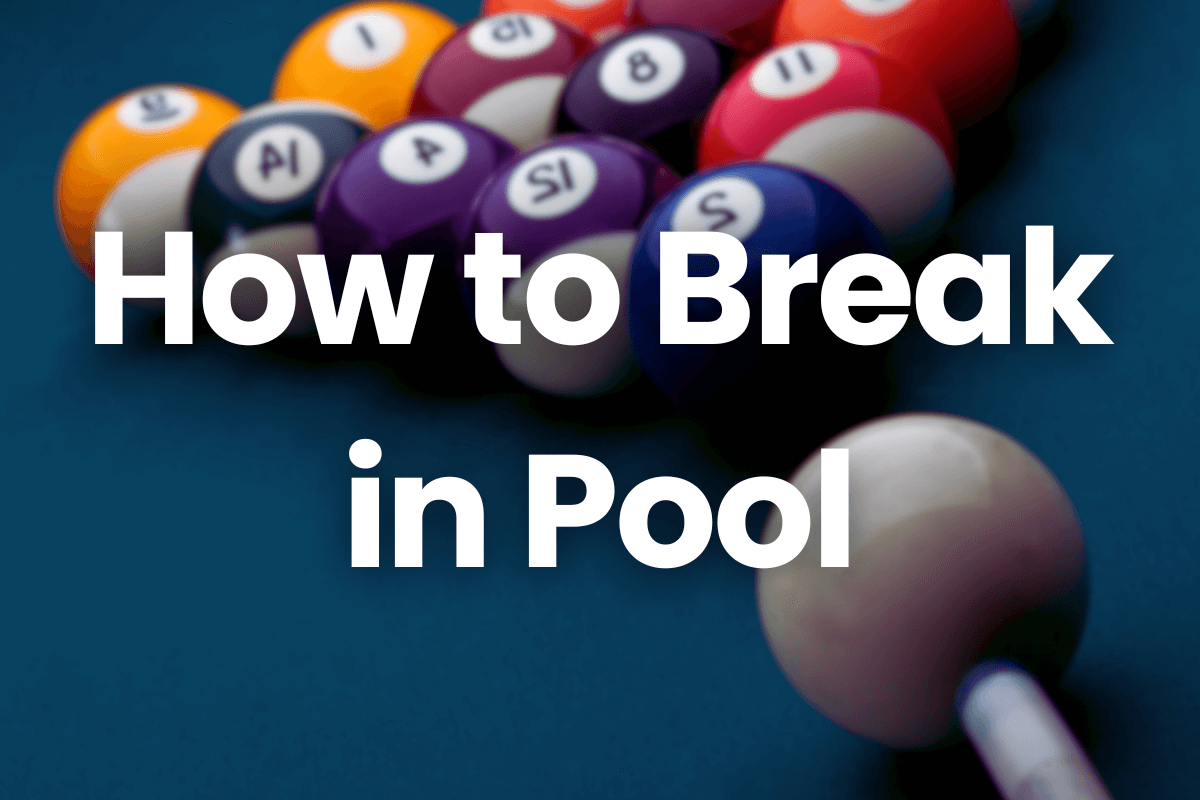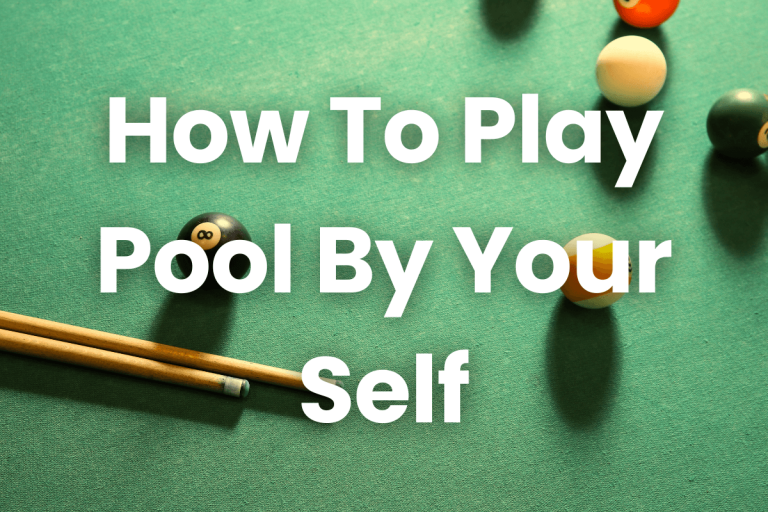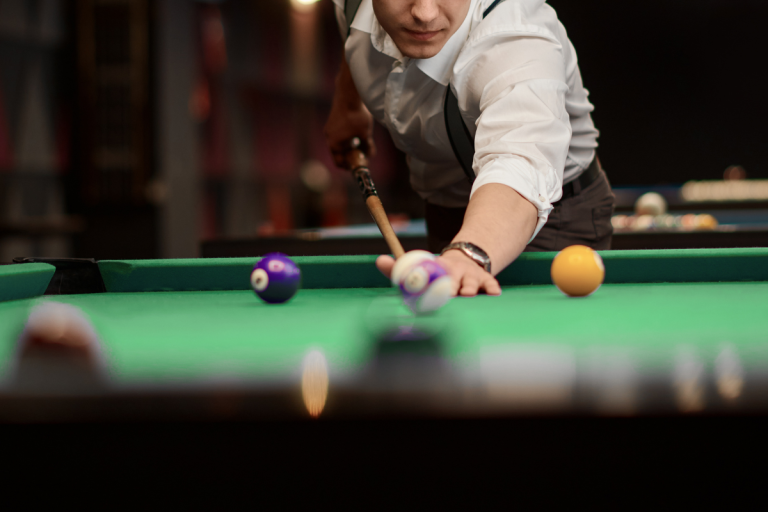How to Break in Pool: Easy Guide (2024)
The break is the first shot in the pool. It is the shot that sets the tone for the rest of the game. A good break can splinter the balls and leave you in a good position to start scoring. A bad break can leave you with a difficult table and make it difficult to win.
That’s why it’s so important to learn how to break in pool effectively. A strategic break can give you a significant advantage over your opponent. It can also help you avoid common mistakes, such as leaving yourself without a shot or giving your opponent an easy opportunity to score.
In this guide, we’ll teach you everything you need to know about breaking in the pool. We’ll cover everything from the basics of the break to advanced techniques. By the end of this guide, you’ll be breaking like a pro!
How to Break in Pool
What are Pool Break Rules?
Break Shot:
- Starting the Game:
- The break shot kicks off the game. The winner of the coin toss or mini-game decides whether to take the first shot or pass it to their opponent.
- The cue ball is placed behind the head string, ready to go.
- Making the Break:
- The player hits the cue ball, aiming to make contact with the front ball in the rack.
- A good break means at least four balls hit the sides, or one ball goes into a pocket.
- Dealing with Mistakes:
- The opponent gets a free shot if the break isn’t done right. They can place the cue ball anywhere behind the head string and shoot any ball.
- If no balls go in or the break is illegal, the balls are set up again, and the same player tries again.
- Some Extra Rules:
- It’s a foul if the cue ball goes into a pocket during the break.
- But if any other balls go in, the player keeps shooting.
The break shot is the start of the fun in billiards. Get it right, and you’re off to a great start!
Why Do We Need a Good Break?
A good break helps you start the game on the right foot. If you break well, you might even get a ball into a pocket straight away, and it helps you have better options for your next shots. So, a strong and smart break helps you control the game from the start!
What Happens During a Break?
When you hit the white ball, it takes the power from your pool stick and moves forward. This is using something we call “momentum”. When the white ball hits the other balls, it passes this momentum to them, making them spread out on the table. Learning how to control where these balls go can really help you play better!
Setting up the Break
Getting the Balls Ready
When we start a pool game, we must arrange the balls in a special shape (usually a triangle) before we break. This setup is called “racking” the balls, and doing it properly is really important to have a fair start for the game.
Where to Place the White Ball
Now, you have to decide where to place the white ball (cue ball) on the table. There is usually a line on the table, and you have to place the ball behind that line. You can choose any spot behind the line that you think will give you the best chance to scatter the other balls nicely.
Choosing How to Break
The way you decide to hit the cue ball into the other balls is your “break style”. Some people like to hit the ball super hard to spread out the other balls as much as possible. Others might choose a softer hit to have more control over where the cue ball ends up afterward. Try different styles and see what works best for you!
Techniques and Strategies for Effective Breaking
Standing and Holding the Stick Right
How you stand and hold your pool stick (cue) makes a big difference in your break. Make sure your legs are comfy and steady, and you’re holding the stick in a way that feels good to you. This helps you hit the ball just right!
Moving the Stick to Hit the Ball
When you swing the stick to hit the ball, doing it smoothly is key. Pull the stick back slowly, then push it forward in a straight, swift line. This helps you hit the ball firmly and accurately, making the other balls scatter nicely.
Learning from the Pros
It’s always good to watch and learn from people who are really good at pool! See how they break and try to do it like them. You can learn a lot by watching their technique and trying to copy it when you play.
Remember, practice makes perfect! So keep trying these techniques, and soon you’ll find your own trick to make that winning break!
Common Mistakes and How to Avoid Them
1. Missing the Hit
Sometimes, we might hit the white ball, but it doesn’t hit the other balls properly or at all. This mistake is called a “mis-cue”. To avoid this, make sure you’re hitting the white ball in the center and your stick is straight.
2. Balls Not Spreading Out
A good break means the balls scatter all around the table. If they’re not spreading out much, try hitting the white ball a bit harder and making sure it hits the triangle of balls right in the middle.
3. Scratching
“Scratching” is when the white ball goes into a pocket during your break. To avoid this, make sure you’re not hitting the white ball too low, and try to aim it so it bounces off the triangle of balls instead of sliding into a pocket.
Remember, making mistakes is how we learn! So even if things don’t go right, it’s all part of getting better at pool. Keep practicing, and you’ll improve over time!
Advanced Breaking Techniques
A. The Power Break:
Want to scatter the balls everywhere? Try the power break! Use a bit more muscle when you hit the cue ball and aim straight at the first ball in the rack. Practice controlling your strength so the white ball doesn’t bounce off the table!
B. The Control Break:
If you prefer being a bit sneaky, try the control break. Instead of using lots of power, focus on hitting the balls softly but accurately so that you can predict where the cue ball ends up. It’s like playing chess and thinking of your next move!
C. The Cut Break:
A cool trick is the cut break. Hit the cue ball slightly to the side of the first ball in the rack. This makes the cue ball “cut” through the other balls, spreading them out in an unexpected way, and can even help you pot a ball!
D. The Second-Ball Break:
You can also try hitting the second ball in the rack instead of the first one. Aim the cue ball a bit to the side and hit the second ball. This spreads the balls differently and can surprise your opponent!
Conclusion
mastering the art of the pool break is all about practice and learning from your shots. We’ve covered essential tips like proper stance, cue handling, and different breaking styles. Now, it’s your turn to hit the table and give it a shot! Remember, even the pros started somewhere, so don’t be discouraged by mistakes. Keep honing your skills, experimenting with techniques, and most importantly, have fun! With dedication and experience, you’ll soon be breaking like a pro and enjoying every moment of your pool game.
FAQs
Can I choose where to place the cue ball for the break?
A: Yes, you can choose where to place the cue ball behind the “headstring,” a line at the head of the table. The cue ball can be positioned anywhere behind this line, giving you control over your break angle and strategy.
Is it better to use a hard or soft break?
A: The choice between a hard or soft break depends on your playing style and the specific game rules. A hard break scatters the balls widely but can be less controlled, while a soft break provides more control but less power. Experiment with both to find the best approach for your game and the rules you’re playing by.
What should I do if the cue ball goes into a pocket during the break?
A: Scratching during the break is a common mistake. To avoid this, aim to hit the cue ball slightly above center to prevent it from jumping into a pocket. Practice your control to keep the cue ball on the table, as scratching often gives your opponent an advantage.
How can I predict where the balls will go after the break?
A: Predicting ball movement after a break involves understanding the physics of the game. Factors like the angle of impact, speed, and spin on the cue ball influence ball trajectories. Over time, with practice and observation, you’ll develop a better sense of where the balls are likely to go and can adjust your technique accordingly.







